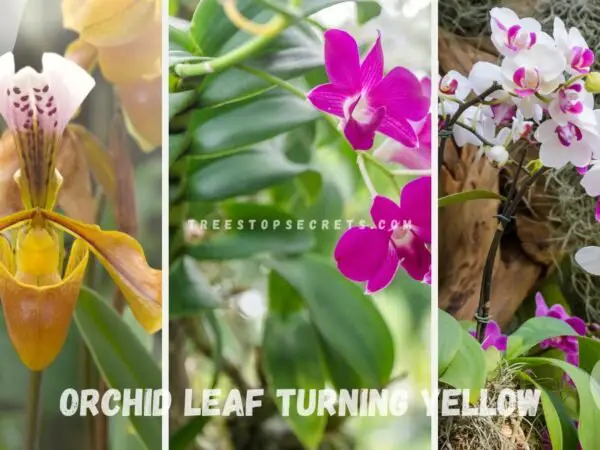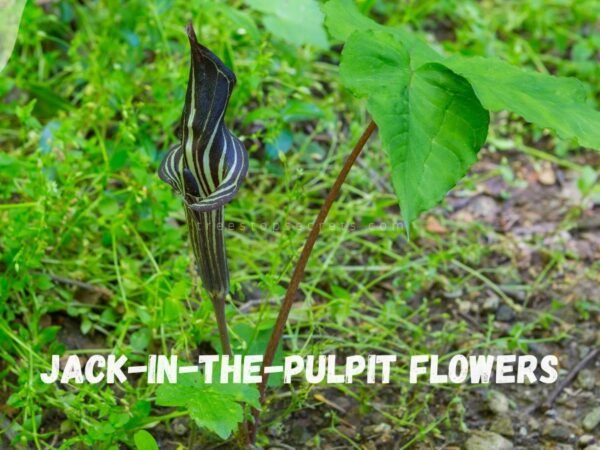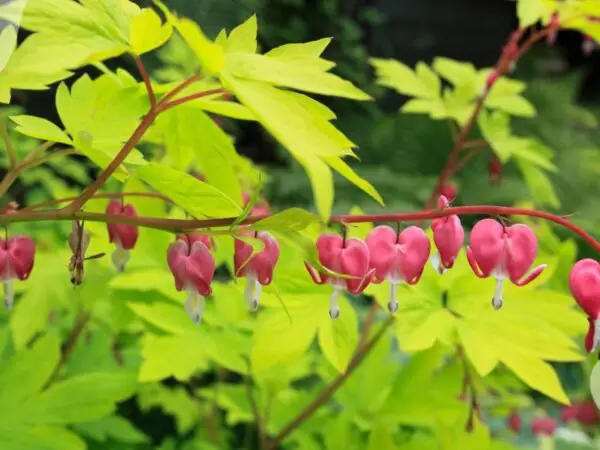Curious about the distinctive appearance of a woody tulip poplar tree? Picture this: tall and straight with unique leaves resembling tulip flowers. Unlike other trees, these giants boast vibrant green foliage that turns golden in fall, creating a striking contrast against the sky. The bark? Smooth and pale when young, transforming into deep furrows as it matures.
Wondering what sets the tulip poplar, known for its nectar, apart from its forest companions? Let's delve into its standout features and uncover what makes this tree a standout in any landscape.
Key Takeaways
- Identifying a Tulip Poplar Tree: Look for the unique characteristics such as the distinctive tulip-shaped leaves and yellow-green flowers with orange markings to identify a tulip poplar tree accurately.
- Caring for Tulip Poplar Trees: Ensure proper watering, adequate sunlight, and well-drained soil to promote healthy growth and prevent common diseases like cankers and leaf spots.
- Distinguishing Features: Pay attention to the tulip poplar tree's straight trunk, furrowed bark, and shallow roots to distinguish it from other tree species in your area.
- Seasonal Changes: Observe how the tulip poplar tree's leaves turn golden-yellow in the fall, adding a vibrant touch to your landscape during the autumn months.
- Value in Landscaping: Consider planting a tulip poplar tree for its fast growth rate, beautiful flowers, and the shade it provides, enhancing the aesthetic appeal of your outdoor space.
- Environmental Benefits: Appreciate the ecological significance of tulip poplar trees in supporting wildlife, improving air quality, and contributing to biodiversity in your local ecosystem.
Tulip Poplar Tree Overview
Physical Characteristics
Tulip poplar trees are easily recognizable by their tall and straight trunk that can reach impressive heights. The branches of these trees grow upwards, giving them a distinctive appearance. When young, tulip poplars have a pyramidal shape, which gradually transforms into an oval shape as the tree matures. These characteristics make them stand out in various landscapes.
When you see a tulip poplar tree, notice its upright branches and how they contribute to its overall structure. As the tree grows older, observe how its initial pyramidal form transitions into an oval one over time. This transformation is part of the natural development process of tulip poplar trees.
Optimal Growing Conditions
For optimal growth, tulip poplar trees require full sun exposure but can tolerate some shade if necessary. They thrive in well-drained soil with slightly acidic properties but can adapt to different soil types such as clay and loam. Understanding these preferred growing conditions will help ensure the health and vitality of your tulip poplar tree.
Consider planting your tulip poplar where it receives ample sunlight while also providing well-drained soil with slightly acidic qualities for ideal growth conditions. Remember that these adaptable trees can also flourish in various soil types like clay or loam, offering flexibility in landscaping choices.
Physical Characteristics of Tulip Poplar Tree
Bark and Trunk
The bark of a young tulip poplar tree is smooth, with a greenish-gray hue. As the tree ages, the bark darkens, developing deep furrows and ridges. A mature tulip poplar can have a trunk diameter reaching up to 4 feet.
The trunk of a tulip poplar is impressive in size as it matures. Picture this - standing next to a massive tree with a trunk wider than most people are tall!
Leaves
Tulip poplar leaves are distinctive, being large at 4 to 8 inches long and wide. Their shape resembles that of tulip flowers, with four lobes and flat tips. In spring and summer, these leaves sport a vibrant bright green color that transitions into striking yellow hues come autumn.
Imagine walking through an autumn forest filled with trees donning stunning yellow foliage - some small like delicate paintings against the sky while others tower above you majestically.
Flowers
One of the most charming features of the tulip poplar tree is its unique flowers, which indeed resemble actual tulips! These flowers exhibit shades of yellow-green with captivating orange markings at their base. Each flower boasts six petals measuring around 2 inches in length.
Think about strolling through an enchanting garden where instead of traditional blooms, you're greeted by delicate yet vibrant "tulips" growing on towering trees - truly nature's artwork!
Roots
Tulip poplars boast shallow roots that spread widely underground. These roots extend beyond the canopy's edge, competing fiercely for nutrients with neighboring plants. Known for their robustness and stability, these trees' roots provide excellent anchorage against strong winds.
Consider how these majestic giants stand tall amidst storms thanks to their resilient root systems gripping firmly into the earth below.
Identifying Tulip Poplar Tree Bark and Trunk
Texture
Tulip poplar tree bark is rough and deeply furrowed, providing a distinct texture that sets it apart from other trees. The leaves, on the other hand, have a smooth surface with a slightly waxy feel to them. This contrast in textures makes it easier to identify tulip poplar trees based on touch alone. The wood of tulip poplar trees boasts a fine-grained quality that contributes to its lightweight nature. When you run your fingers over the bark of a tulip poplar tree, you can feel the ruggedness created by its deep furrows.
The smooth and slightly waxy texture of the leaves offers an interesting tactile experience when compared to other tree species. Moreover, if you were to compare the weight of tulip poplar wood with that of other types of trees, you would notice how light it feels due to its fine-grained composition.
Color
Mature tulip poplar tree bark typically showcases dark brown or grayish-black hues, adding an element of elegance and maturity to these majestic trees' appearance. During the growing season, their leaves are vibrant bright green which transitions into striking yellow tones as autumn approaches. This color transformation is one way for enthusiasts or nature lovers like yourself to spot these beautiful trees during different times of the year easily.
In addition to their distinctive bark coloration and leaf variations throughout seasons, keep an eye out for the flowers on tulip poplars; they bloom in shades ranging from yellow-green with captivating orange markings. These unique flower colors further distinguish this species among others in forests or gardens where they grow abundantly.
Recognizing Tulip Poplar Tree Leaves
Tulip poplar tree leaves vary in shape as the tree matures. Young tulip poplars boast a pyramidal silhouette, narrowing towards the top. However, as they grow older, their appearance transforms into an oval or rounded form. The branches of these trees tend to grow vertically, creating a well-balanced and symmetrical crown.
In terms of size, tulip poplar trees are known to reach remarkable heights, often exceeding 100 feet when fully developed. These majestic trees can have a spread that ranges from 40 to 50 feet at their widest point. Furthermore, the trunk diameter of a mature tulip poplar can measure up to an impressive 4 feet.
Understanding Tulip Poplar Tree Flowers
Appearance
Tulip poplar trees are known for their majestic presence, standing tall with upright branches that create a striking silhouette against the sky. The leaves of these trees have a unique shape, resembling tulip flowers, which adds to their charm and distinctiveness in the landscape. During the blooming season, typically in late spring or early summer, these trees showcase vibrant yellow-green flowers that contrast beautifully with the surrounding foliage.
The tulip poplar tree stands out due to its impressive height and straight branches. Its leaves have an interesting shape similar to tulip flowers. When in bloom during late spring or early summer, these trees display eye-catching yellow-green flowers.
Blooming Season
The blooming period of tulip poplar trees usually occurs during late spring or early summer when nature is at its peak vibrancy. These magnificent trees adorn themselves with clusters of bright yellow-green blossoms that capture attention from afar. Each flower lasts only a few days before gracefully falling off the tree, signaling the end of its short-lived but impactful display.
- Tulip poplar tree blooms last for about two weeks.
- The flowering stage happens during late spring or early summer.
- After just a few days on each branch, individual flowers drop off.
Insight into Tulip Poplar Tree Roots
Root System
Tulip poplar trees have a shallow root system that spreads widely. Their roots can extend beyond the tree's canopy, competing with other plants for resources. Despite being shallow, these roots offer stability and support to the tall tree. The extensive network of roots helps anchor the tree securely in the ground, preventing it from toppling over during strong winds or storms.
The shallow nature of tulip poplar tree roots allows them to efficiently absorb water and nutrients from the upper layers of soil. This feature enables the tree to thrive even in areas where deeper-rooted species might struggle due to poor soil conditions or limited access to resources. Their ability to spread widely helps tulip poplars outcompete surrounding vegetation by capturing essential elements necessary for growth.
Depth and Spread
Depending on soil conditions, tulip poplar tree roots can vary in depth. On average, these roots penetrate up to 2 feet deep into the soil, allowing them access to moisture and vital nutrients present in this layer. The wide spread of their root system extends well beyond the canopy of the tree itself, covering a significant area around its base.
This extensive spread is advantageous as it enables tulip poplar trees to gather resources efficiently from a larger volume of soil compared to trees with more concentrated root systems. By exploring a broad area beneath and around them, these trees maximize their chances of finding essential elements required for growth and development.
Quick Reference Guide for Tulip Poplar Trees
Growth Rate
Tulip poplar trees are renowned for their fast growth rate. In ideal conditions, they can grow up to 2 feet per year. Younger trees typically exhibit a quicker growth pace compared to more mature ones. The rapid growth of tulip poplar trees makes them popular choices for landscaping and reforestation projects.
Factors such as soil quality, sunlight exposure, and water availability play crucial roles in determining the growth rate of tulip poplar trees. These factors directly impact the tree's ability to photosynthesize efficiently and convert nutrients into new plant tissue.
Height Range
The height range of tulip poplar trees varies significantly, with these majestic giants capable of reaching between 70 and 150 feet tall. On average, mature tulip poplars stand at heights ranging from 90 to 120 feet, showcasing their impressive stature in forests and landscapes alike.
Genetics also influence the final height that a tulip poplar tree can achieve. Some varieties may reach greater heights due to genetic predispositions towards taller growth patterns. Environmental conditions like ample sunlight and well-drained soil contribute to optimal growth outcomes for these towering beauties.
Differences Between a Tulip Tree and a Poplar Tree
Leaf Shape
Tulip poplar trees have leaves that look like tulip flowers, with four distinct lobes on each leaf. The flat tip of the leaf adds to its unique appearance. When seen from afar, the silhouette created by these lobes is easily recognizable.
The shape of the leaves sets tulip poplar trees apart from other tree species. Their distinctive form resembles that of tulips, adding to their charm in gardens and landscapes. This unique feature makes them stand out among different types of trees.
Flower Type
The flowers produced by tulip poplar trees closely resemble actual tulips with six petals forming a cup-like shape. These showy flowers are not only visually appealing but also serve an essential purpose in attracting pollinators such as bees. The nectar within these flowers entices various pollinating insects, aiding in the tree's reproduction process.
The striking resemblance between the flowers of tulip poplar trees and actual tulips is remarkable. This similarity highlights nature's diversity and showcases how different plant species can share common characteristics for survival purposes.
Growing Guide and Facts about the Tulip Poplar Tree
Seed Collection
Tulip poplar trees produce winged seeds known as samaras. These seeds typically mature during late summer or early fall, getting dispersed by the wind. You can propagate new tulip poplar trees by collecting seeds directly from the tree or gathering fallen samaras.
Collecting tulip poplar seeds is an effective way to grow new trees. The process involves harvesting the winged samaras either from the ground after they have fallen naturally or directly from the branches of a mature tree. Once collected, these seeds can be used for planting to cultivate new tulip poplars.
Planting Seeds
When planting tulip poplar seeds, it's essential to prepare a well-draining potting mix in a container. Sow the seeds at a depth of 1 inch and cover them with soil before watering gently. To ensure successful germination, keep the soil consistently moist until you see signs of sprouting, which usually occurs within several weeks.
Planting tulip poplar seeds requires attention to detail in terms of soil quality and moisture levels. By providing adequate drainage and maintaining consistent moisture, you create optimal conditions for seed germination and subsequent growth into healthy saplings ready for transplantation into larger pots or outdoor settings.
Alternative Methods
Apart from seed propagation, there are alternative methods available for growing tulip poplar trees such as cuttings or grafting techniques. Softwood cuttings taken during early summer tend to have higher success rates compared to other times of year when attempting this method. Grafting onto rootstock from related species offers another approach that can help ensure desirable traits in newly propagated trees.
Common Pests and Diseases Affecting Tulip Poplar Trees
Pests Overview
Aphids, scale insects, and caterpillars are common pests that can harm tulip poplar trees. Aphids suck sap from leaves, causing them to distort and secrete honeydew. This sticky substance attracts other pests like ants.
Scale insects on tulip poplars may lead to yellowing leaves and early leaf drop if not addressed promptly. These small insects attach themselves to the tree's branches or trunk, sucking out essential nutrients. Caterpillars also pose a threat by feeding on the foliage of tulip poplars.
- Pros: Early detection allows for effective pest control measures.
- Cons: Infestations can weaken the tree over time if left untreated.
Disease Types
Tulip poplar trees are vulnerable to various diseases such as verticillium wilt and canker diseases. Verticillium wilt is a fungal disease that causes wilting, yellowing of leaves, and eventual branch death. The fungus blocks water transport within the tree, leading to symptoms similar to drought stress.
Canker diseases create sunken areas on the bark of tulip poplars, weakening their structure over time. These areas serve as entry points for pathogens that cause decay in the inner layers of wood.
-
Steps for Preventative Care:
-
Regularly inspect your tulip poplar tree for signs of pests or diseases.
-
Prune affected branches promptly to prevent further spread.
-
Maintain proper watering practices to reduce stress on the tree.
-
Actions When Detecting Issues:
-
Identify specific pest or disease affecting your tree through visual inspection.
-
Consult with a local arborist or extension office for accurate diagnosis. 3.. Implement appropriate treatment based on expert recommendations.
You've now got a solid grip on what a tulip poplar tree looks like from its towering trunk to its distinctive leaves and vibrant flowers. Understanding the key features will make spotting these majestic trees a breeze on your next nature walk or in your backyard. Remember, the more you know about them, the more you can appreciate their beauty and importance in the ecosystem.
So, next time you're out and about, keep an eye out for those iconic tulip poplar trees. Take a moment to admire their grandeur and maybe even share your newfound knowledge with friends and family. Happy tree-spotting adventures!
Frequently Asked Questions
What are the physical characteristics of a Tulip Poplar tree?
The Tulip Poplar tree is known for its tall stature, reaching up to 90 feet in height. It features distinct tulip-shaped leaves and vibrant flowers resembling tulips. The bark is light gray with deep furrows as the tree matures.
How can I identify a Tulip Poplar tree by its bark and trunk?
Look for light gray bark that becomes deeply furrowed with age, similar to alligator skin. Younger trees have smoother bark that gradually transforms over time. The trunk is typically straight and cylindrical, adding to the majestic appearance of the tree.
What do Tulip Poplar tree leaves look like?
Tulip Poplar leaves are unique, featuring four lobes that resemble a tulip flower when viewed from above. They are bright green in color and turn golden yellow in autumn before falling off.
Can you describe the flowers of a Tulip Poplar tree?
Tulip Poplar trees produce eye-catching flowers with shades of greenish-yellow and orange at their base, resembling tulips both in shape and coloration. These blooms add beauty to the canopy during springtime.
Are there any common pests or diseases that affect Tulip Poplar trees?
Tulip Poplar trees can be susceptible to aphids, scale insects, leaf spots, and verticillium wilt disease. Regular inspection and proper care such as pruning dead branches can help prevent infestations or infections from spreading.
Image Source: Paid image from CANVA





